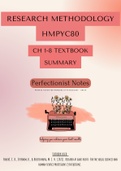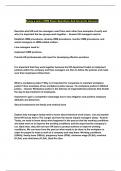Summary
HMPYC80 RESEARCH METHODOLOGY textbook summary chapter 1 to 8
- Course
- Institution
- Book
These chapters will help you to understand sections of your research proposal and answer the first multiple choice quiz. Great summary and well put together.
[Show more]





